Rose Grandiflora is the unrecognized queen. When to plant roses in spring and how to do it
Olga Ravilova | 2013-11-18
If you are thinking of growing the queen of flowers - a rose in your country house or in the garden, but you are stopped by the problem of choosing suitable species, as well as the myth about the capriciousness of the plant, then this article is for you. The article will help you understand the method of growing roses and choose the best varieties and shapes of roses that are ideal for growing in your area. Below are the groups of roses that can grow in open ground in the North-West of Russia. It is among them that you have to make a choice.
The group of park roses includes various forms of wild rose hips and cultivated roses with non-double and semi-double flowers. This group is the most winter-hardy and the only one that does without winter shelter in our climate. These roses tolerate pruning well and are capable of developing powerful shrubs from which to create magnificent impenetrable hedges.

Tea roses
Everyone knows tea roses from their bouquets. They are the least winter-hardy, in our country they are grown only grafted onto rose hips, their own-rooted plants die. These roses got their name for the aroma of flowers, similar to the aroma of freshly brewed tea. They are appreciated for their graceful flower structure and are most often used for cutting.
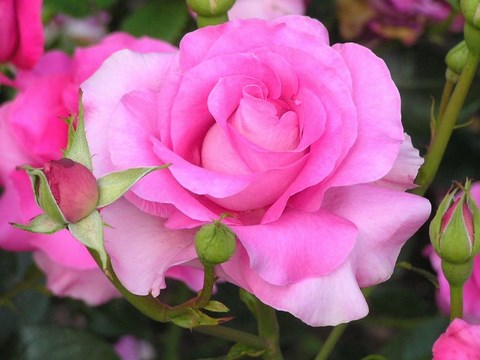
Repair roses
Repaired roses. The name itself suggests that these roses tend to bloom again. (Provided that you pick off wilted flowers, preventing the berries from setting.) They form tall, up to 1.5 m, bushes and surpass tea roses in winter hardiness. The flowers are arranged on long stalks, making them suitable for cutting and usually have a strong aroma.
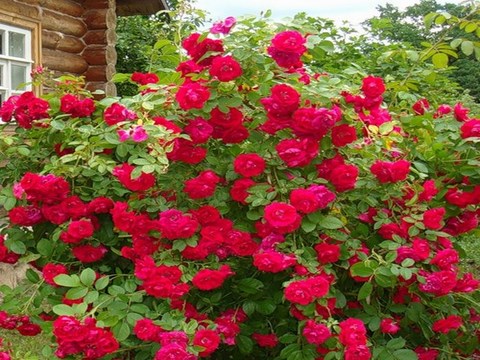
Hybrid tea roses
Hybrid tea roses evolved from crossing tea roses with remontant roses. From the former, they inherited a similar structure of the bud and flower, as well as their delicate smell, and from the latter, greater winter hardiness, the ability to bloom until late autumn and a greater variety of colors. The height of these plants does not exceed a meter, some of the varieties may be self-rooted.
Polyanthus roses
Polyanthus roses are bred by crossing curly multi-flowered forms with each other and with remontant roses. They grow in extremely graceful bushes, strongly branched, up to 40 cm high. Fragrant flowers are collected in small-flowered panicles. Flowering continues until frost.
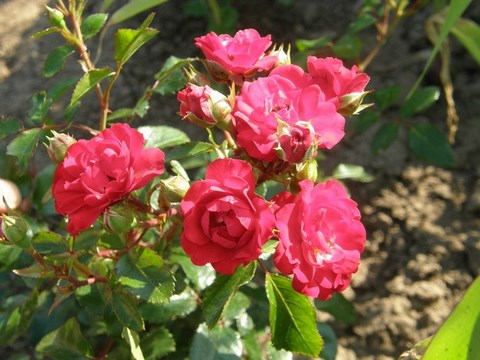
Floribunda roses
Floribunda roses are the most popular group among amateur flower growers. Their bushes are truly a garden decoration. Large fragrant flowers are collected in a brush of 10-30 pieces. Flowering continues until frost. Floribunda roses originated from crossing large-flowered polyanthus roses with tea-hybrid roses.
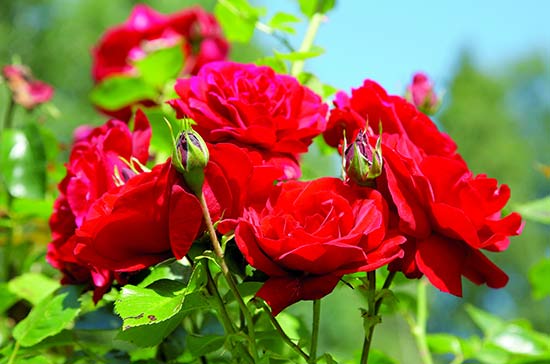 Floribunda rose flowers. Photo: www.hollandpark.com
Floribunda rose flowers. Photo: www.hollandpark.com Roses of Grandiflora
The Grandiflora roses are derived from the repeated crossing of Floribunda roses with tea hybrid roses. Their flowers have grown even more, but their number in the brush has decreased to several pieces. The main feature of these roses is their resistance to weather conditions and low susceptibility to fungal diseases.

Climbing roses
And finally, climbing roses, which have become so popular lately. This is an independent group of roses that give fast-growing and vigorous plants. Unfortunately, in our climate, only some of their varieties can winter without shelter. These varieties usually have non-double flowers. The rest are in need of shelter. Climbing roses used to decorate gazebos and decorate walls. Their flowers are collected in a brush, can have a variety of colors, as well as a simple or double shape.
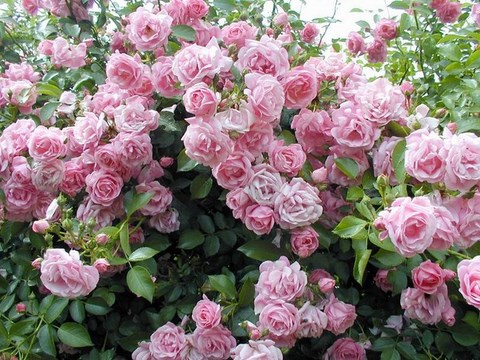
How and when to plant roses?
Spring is considered the best time to plant roses, but prepare a place for them and dig landing pit preferably in the fall. The dimensions of the pit are 40 × 40 cm, it is advisable to lay drainage on the bottom, for example, broken brick, and pour a bucket of semi-rotted manure or compost on top. Roses prefer loamy or sandy loamy fertile soils with a slightly acidic reaction. If the soil is acidic, add wood ash... The feeding area for tall varieties is 100 × 100 cm, for hybrid teas and Floribundas - 60 × 60 cm, and for polyanthus varieties - 50 × 50 cm, and in the future it should always remain loose and free of weeds.
In the nursery, you will most likely be offered either an adult seven-year-old seedling grafted onto a rose hip, or a one-year eyepiece, or a rooted one-year-old - the choice is yours. Naturally, an adult plant will give flowers sooner, but you should take into account the following moment: if you want to have tea or tea-hybrid roses for cutting, then you will not get a high-quality long stem from a seven-year-old plant. In all other respects, the rose will meet your expectations. Further, a grafted plant, as already mentioned, is more frost-resistant than a rooted plant, but on the other hand, you will have to constantly struggle with wild growth, remove it so as not to weaken the plant. In a self-rooted rose, all the shoots give cultivated plants.

Another important point- the root system. In the nursery, seedlings with an open root system, that is, freshly dug out, are cheaper. But if you have a long way to go, it is still preferable to take the plant in a container, since even half an hour in the open air is fatal to the roots.
Works before planting
Before planting, the stock is removed from the eyepiece to the eye, and in the seedlings I leave 3-4 shoots with 5-8 buds on each. For better contact with the soil, the roots are dipped in a clay mash, consisting of two parts of clay and one part of a mullein, before planting. The seedling is placed on a mound in the center of the pit and the roots are spread. Too long roots can be shortened, but by no more than a third. When planting, make sure that the root collar or the grafting site is 4-6 cm below the soil level. (Do not forget to remove the piping from the eyepieces if it is not removed!) To protect the plant from sunburn and airing it immediately after planting, completely cover it with earth. When the rose starts to grow, gradually, in several steps, level the mound.
How and what to feed
During the growing season, roses are fed three times. For the first time in early June, infusion of mullein (1 liter per bucket of water, add 20 g of potassium nitrate and 30 g of superphosphate). You can repeat it ten days later again. The second top dressing is in July, for remontants - after flowering. 10 g of nitrogen, 30 g of phosphorus and 30 g of potassium are added to square meter... You can use the full mineral fertilizer for flowers. The last dressing is given at the beginning of August to accelerate the maturation of the wood (40 g of superphosphate and 30 g of potassium per 1 m²). From mid-August, watering and cutting flowers are stopped, only wilted ones are removed, as well as apical growth buds for better ripening of shoots.
Preparing roses for winter
No later than two weeks before the onset of stable subzero temperatures, the roses are prepared for winter: the green fatty shoots and unripe tops are cut out, starting from the lower ones, most of the leaves, buds and flowers are removed, the bushes are slightly spud. Before the soil freezes, wooden boxes or frames are installed over the plants and covered with foil so that no water gets inside. From above, the box is covered with sawdust or peat when the soil is slightly promorized. This hideout should be kept away from getting wet and mice that may also like it. warm house... Spruce branches can help from mice, it is laid directly on roses or on top of a box. With a good snow cover, roses will calmly overwinter.
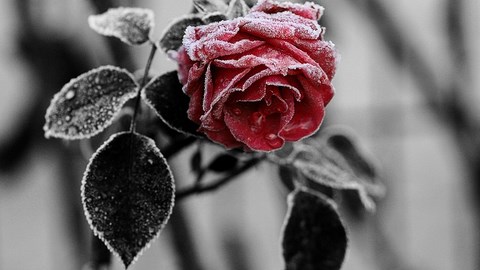
Spring worries
In the spring, you should take care of the roses as early as possible, otherwise, after overwintering, they may die from temperature changes that cause condensation inside the shelter.You should visit your pets when the snow has not yet completely melted, in early April. Remove the box and slightly uncoil the roses, then put the box back, protecting it from the rain on top. You can finally remove it at the beginning of May on a cloudy day to avoid sunburn. As you can see, everything turns out to be not so difficult and not so scary, but what are the prospects: an abundance of royal roses, variegated colors, aroma! When a rose blooms for the first time in the garden, joy and pride rises in the soul. I sincerely wish you excellent mood and success!
Roses of Grandiflora (Grand) Grandiflora (Gr.) - to some extent an arbitrary garden group, not recognized in many European countries. Varieties of this group in these countries are referred mainly to the Floribunda group.
Start this group garden roses put by Walter Lammerts, who crossed the Charlotte Armstrong Hybrid Tea Rose with the Floribunda Floradora rose. A new variety was introduced to the world in 1954 and was called "Elizabeth Queen". The flowers of this variety were different from the flowers of roses of other groups and were named Grandiflora (large-flowered).
The varieties of this group have much in common with Floribunda and Hybrid Tea. They are distinguished by strong and long flowering, surpassing other groups in growth strength and winter hardiness. Rose bushes of Grandiflora are distinguished by their strong structure and reach 2 m in height. Large, double, graceful flowers on strong straight stems closer to the hybrid tea.
Flowers are collected in inflorescences of 3-5 pieces, this makes them closer to the Floribunda group. This group includes relatively few varieties, but their number in the global assortment is increasing from year to year.
The requirements for growing conditions are the same as for Hybrid Tea, they are propagated in the same way. Bloom profusely from mid-June to mid-September. The predominant colors are pink, white, red with shades.
Using 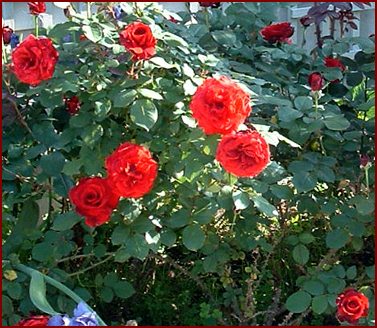
Roses of Grandiflora form long, straight shoots, which allows them to be widely used for cutting. They can also be planted in flower beds. A good option- group and single planting on the lawn. It is advisable to use grandiflora roses for planting in borders. They can successfully decorate the background.
Roses of Grandiflora are promising for landscaping large areas. There are also standard forms of these roses.
Varieties
Some varieties of the Grandiflora group:
Garden Stein, Golden Girl, Komsomolsky light, Coral surprise, Queen Elizabeth, Scarlet Knight, Stella, Major Gagarin, Montezuma, War Dance, Cherry Glow.
Queen elizabeth 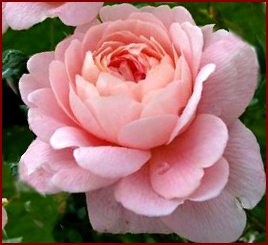
(Portland, gold medal, 1954; AARS 1955; RNRS, PIT 1955; ARS, H.M. Hubbard Gold Medal, 1957; WFRS, Hall of Fame, 1978.)
The variety was bred in 1954 by the breeder E. Lammertson and is the ancestor of the garden group of Grandiflora.
Flowers of "Queen Elizabeth" are pure pink, with a high center, large (up to 10 cm in diameter), double (30 petals), slightly fragrant, 3-11 per inflorescence. Bushes are high (90-120 cm), straight, dense. Leaves are leathery, shiny. Abundant flowering.
The variety is unpretentious, winter-hardy, disease resistant, able to grow in almost any conditions. Differs in shade tolerance.
Montezuma
A hybrid of Fandango and Floradora roses.
H.C. Swit 1955. (Geneva, Gold Medal, 1955; RNRS, Gold Medal, 1956; Portland, Gold Medal, 1957.)
The flowers are dark orange-red, large (10-11 cm), double (30-40 petals), with a light aroma, single and in inflorescences (3-5). Vigorous bushes (80-90 cm). Abundant flowering. Insufficiently resistant to disease. Winter hardy.
Using: for group boarding.
Scarlet knight
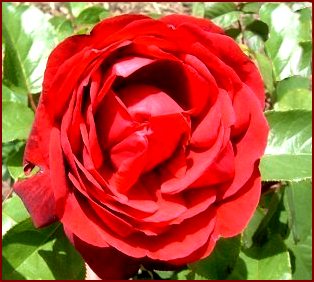 (Madrid, Gold Medal, 1966; AARS, 1968.)
(Madrid, Gold Medal, 1966; AARS, 1968.)
The flowers are dark red, large (10 cm), double (30-35 petals), with a slight aroma, in inflorescences (3-5). Leaves are leathery, shiny. Bushes vigorous (80 cm), erect. The flowering is moderate. May be amazed powdery mildew... Winter hardy.
Using: the variety is suitable for planting in groups as well as for cutting.
Sonia
The flowers are salmon-pink, large (9-10 cm), double (25-30 petals), with a light aroma, solitary and 3-5 in inflorescences. Leaves are leathery, shiny. Bushes 70 cm high, straight. Abundant flowering. Disease resistant. Winter hardy. The variety is patented as Grandiflora.
Stella
(RNRS, Gold Medal, 1960.)
Flowers with a weak aroma, pink with a reddish border, large (11-12 cm), double (35-40 petals), in inflorescences (3-5). The leaves are dark green, leathery. The thorns are very large. Bushes vigorous (80-90 cm), straight. Abundant flowering. Resistant to disease. Winter hardy.
"A lion"
Flowers of contrasting color: the upper side of the petals is bright red, the lower side is silvery white. The shape of the flower is goblet. Strong double (35-40 petals), large (up to 13 cm), single or 5-7 in inflorescence. Bushes are high (up to 80 cm), erect, dense. Abundant flowering. Winter hardy.
"Komsomolsky light"
The creator of the variety is the Soviet breeder E. Klimenko. The flowers are cup-shaped, up to 13 cm in diameter, slightly double (up to 20 petals), single or 3-4 per inflorescence, weakly fragrant. The color of the flowers is blood-red with a velvet bloom, golden in the center. Bushes 80-120 cm high, wide and dense, slightly spreading, profuse flowering. Very winter hardy variety.
Using: looks spectacular in groups, suitable for standard culture. Well worth the cut.
Gold Medal
The flowers are weakly fragrant, 10-11 cm in diameter, golden yellow with an orange edge, bushes 80 cm high.
Love
The flowers are weakly fragrant, medium-sized (9 cm), bright red with a silvery-white lining. Bushes 80 cm high.
Roses of Grandiflora (Grand) Grandiflora (Gr.) - to some extent an arbitrary garden group, not recognized in many European countries. Varieties of this group in these countries are referred mainly to the Floribunda group.
This group of garden roses was started by Walter Lammerts, who crossed the Charlotte Armstrong Hybrid Tea Rose with the Floribunda Floradora. A new variety was introduced to the world in 1954 and was called "Elizabeth Queen". The flowers of this variety differed from the flowers of roses of other groups and were named Grandiflora (large-flowered).
The varieties of this group have much in common with Floribunda and Hybrid Tea. They are distinguished by strong and long flowering, surpassing other groups in growth strength and winter hardiness. Rose bushes of Grandiflora are distinguished by their strong structure and reach 2 m in height. Large, double, graceful flowers on strong straight stems closer to the hybrid tea.
Flowers are collected in inflorescences of 3-5 pieces, this makes them closer to the Floribunda group. This group includes relatively few varieties, but their number in the global assortment is increasing from year to year.
The requirements for growing conditions are the same as for Hybrid Tea, they are propagated in the same way. Bloom profusely from mid-June to mid-September. The predominant colors are pink, white, red with shades.
Using 
Roses of Grandiflora form long, straight shoots, which allows them to be widely used for cutting. They can also be planted in flower beds. A good option is group and single plantings on the lawn. It is advisable to use grandiflora roses for planting in borders. They can successfully decorate the background.
Roses of Grandiflora are promising for landscaping large areas. There are also standard forms of these roses.
Varieties
Some varieties of the Grandiflora group:
Garden Stein, Golden Girl, Komsomolsky light, Coral surprise, Queen Elizabeth, Scarlet Knight, Stella, Major Gagarin, Montezuma, War Dance, Cherry Glow.
Queen elizabeth 
(Portland Gold Medal, 1954; AARS, 1955; RNRS, PIT, 1955; ARS, H.M. Hubbard Gold Medal, 1957; WFRS, Hall of Fame, 1978.)
The variety was bred in 1954 by the breeder E. Lammertson and is the ancestor of the garden group of Grandiflora.
Flowers of "Queen Elizabeth" are pure pink, with a high center, large (up to 10 cm in diameter), double (30 petals), slightly fragrant, 3-11 per inflorescence. Bushes are high (90-120 cm), straight, dense. Leaves are leathery, shiny. Abundant flowering.
The variety is unpretentious, winter-hardy, disease resistant, able to grow in almost any conditions. Differs in shade tolerance.
Montezuma
A hybrid of Fandango and Floradora roses.
H.C. Swit 1955. (Geneva, Gold Medal, 1955; RNRS, Gold Medal, 1956; Portland, Gold Medal, 1957.)
The flowers are dark orange-red, large (10-11 cm), double (30-40 petals), with a light aroma, single and in inflorescences (3-5). Vigorous bushes (80-90 cm). Abundant flowering. Insufficiently resistant to disease. Winter hardy.
Using: for group boarding.
Scarlet knight
 (Madrid, Gold Medal, 1966; AARS, 1968.)
(Madrid, Gold Medal, 1966; AARS, 1968.)
The flowers are dark red, large (10 cm), double (30-35 petals), with a slight aroma, in inflorescences (3-5). Leaves are leathery, shiny. Bushes vigorous (80 cm), erect. Moderate flowering. May be affected by powdery mildew. Winter hardy.
Using: the variety is suitable for planting in groups as well as for cutting.
Sonia
The flowers are salmon-pink, large (9-10 cm), double (25-30 petals), with a light aroma, solitary and 3-5 in inflorescences. Leaves are leathery, shiny. Bushes 70 cm high, straight. Abundant flowering. Disease resistant. Winter hardy. The variety is patented as Grandiflora.
Stella
(RNRS, Gold Medal, 1960.)
Flowers with a weak aroma, pink with a reddish border, large (11-12 cm), double (35-40 petals), in inflorescences (3-5). The leaves are dark green, leathery. The thorns are very large. Bushes vigorous (80-90 cm), straight. Abundant flowering. Resistant to disease. Winter hardy.
"A lion"
Flowers of contrasting color: the upper side of the petals is bright red, the lower side is silvery white. The shape of the flower is goblet. Strong double (35-40 petals), large (up to 13 cm), single or 5-7 in inflorescence. Bushes are high (up to 80 cm), erect, dense. Abundant flowering. Winter hardy.
"Komsomolsky light"
The creator of the variety is the Soviet breeder E. Klimenko. The flowers are cup-shaped, up to 13 cm in diameter, slightly double (up to 20 petals), single or 3-4 per inflorescence, weakly fragrant. The color of the flowers is blood-red with a velvet bloom, golden in the center. Bushes 80-120 cm high, wide and dense, slightly spreading, profuse flowering. Very winter hardy variety.
Using: looks spectacular in groups, suitable for standard culture. Well worth the cut.
Gold Medal
The flowers are weakly fragrant, 10-11 cm in diameter, golden yellow with an orange edge, bushes 80 cm high.
Love
The flowers are weakly fragrant, medium-sized (9 cm), bright red with a silvery-white lining. Bushes 80 cm high.
(abbreviated - Grand.) Grandiflora (Gr.)
A somewhat arbitrary garden group, including varieties with abundant flowering, as in the Floribunda group, and with the size and shape of the flower, as in the Tea Hybrid. Characteristic properties are the strength of growth and winter hardiness. Typical representatives of this group are generally known varieties " Queen Elizabeth"and" Sonya"Grandiflora roses are widely used for cutting, as they form long, straight shoots.
In many European countries, this group is not recognized and the varieties included here are mainly attributed to the Floribunda group.
The garden group of grandiflora was obtained in the 50s of the XX century as a result of crossing hybrid tea roses with floribunda roses. Large double flowers were obtained from hybrid tea grandiflora roses, which, however, are collected in small inflorescences of 3-5 buds. Floribunda roses give grandiflora roses the ability to bloom profusely and for a long time.
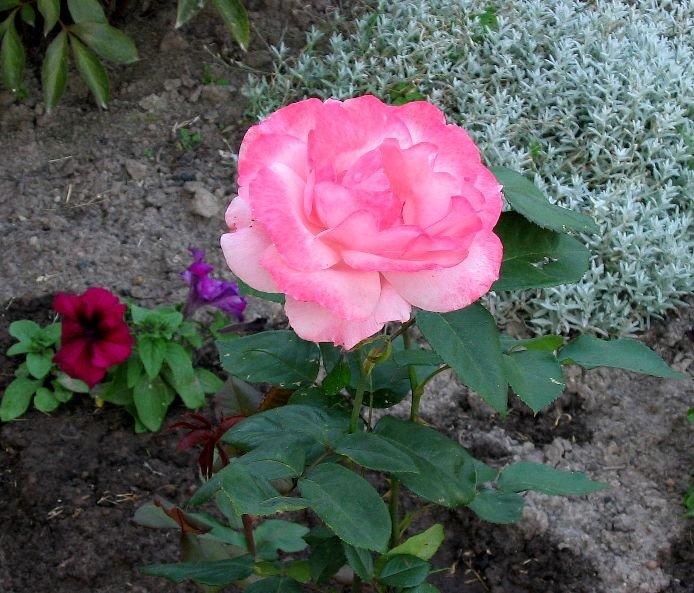
Rose grandifloraV7.
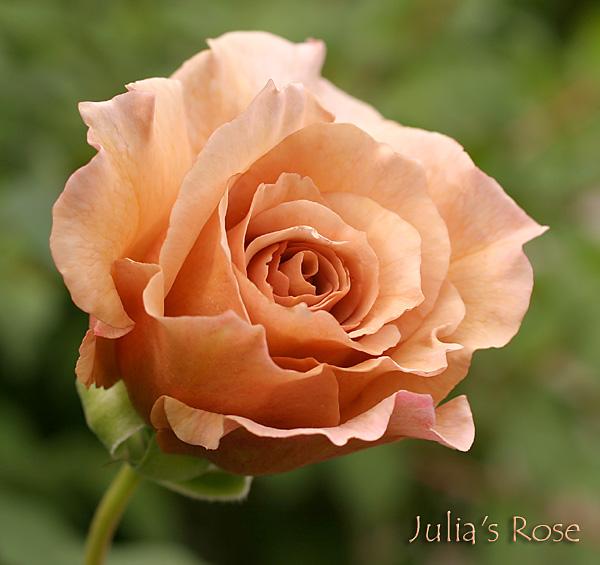
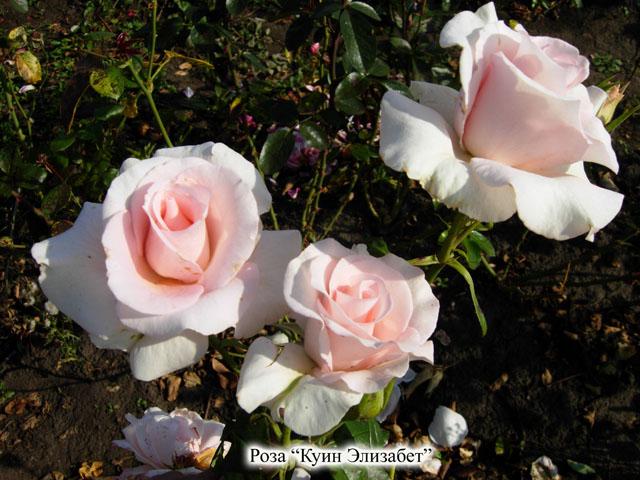
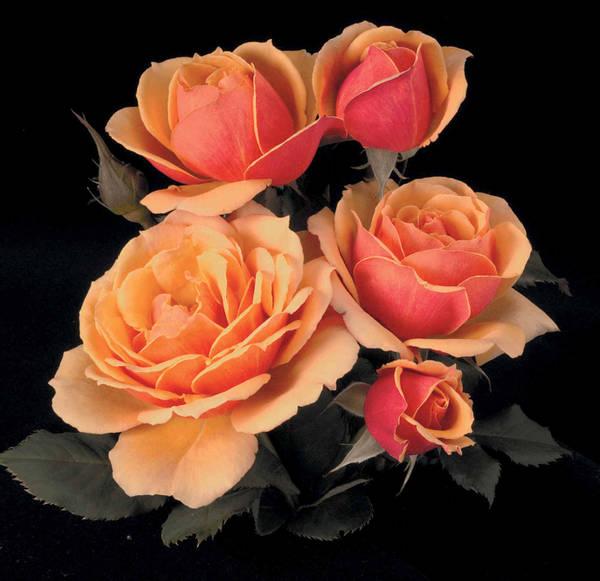

Hybrid tea roses and their clays(Chg) Hybrid Tea and Climbing Hybrid Tea(HT & Cl HT) - class varieties roses from the group Modern garden roses by classification adopted in 1976 in Oxford World Federation of Rose Societies(World Federation of Rose Societies, or WFRS).
In 1867, as a result of crossing renovation and teahouse rose variety was obtained "La France"... This variety is considered the ancestor of the class of hybrid tea roses. Hybrid tea roses are one of the most popular groups among modern roses. ... The creator of this variety was French breeder roses Jean-Baptiste André Guillot.
According to another version, the first varieties of hybrid tea roses should be considered: "Cheshunt Hybrid" George Paul, Jr., 1872 and "Madame Lacharme" François Lacharme, 1872. Since "La France" originally went on sale as a hybrid bourbon rose flower .
Working in Lyon breeder Joseph Pernet-Ducher in the 1890s worked to obtain roses with deep yellow flowers using in crosses Rosa foetida ... Crossed the vintage purple-red renovation rose "Antoine Ducher" c R. foetida in 1900, he received "Soleil d" Or " with yellow flowers of a more interesting shade than could be found in varieties of tea roses. This variety and its descendants make up the "Pernetiana Roses" group named after its creator. They are currently included in the classes Thetis rose hybrids and hybrid tea roses. By the late 1920s, these varieties were being used to create modern hybrid tea roses. The result was obtained: "Madame Edouard Herriot", "Los Angeles", "Souvenir de Georges Pernet", "Willowmere", "Autumn", "California", "Arthur R. Goodwin", "Lyon-Rose" .
Distinctive features of hybrid tea roses are the highest quality of the flower and the continuity of flowering.
The height of medium-sized varieties is 60-70 cm, tall varieties are 80-100 cm. In the conditions of central Russia, flowers bloom in mid-late June and bloom profusely until autumn. Flowers with a diameter of 10-14 cm, are double (25-35 petals) and densely double (50-60 petals), single or in small inflorescences. The color and texture of the petals are varied.
Scent flowers include a rich range of scents - from thick to subtle and light. Breeding is not just about working with flowers. Great importance is attached to the shape and proportional structure of the bush, its good foliage, leaf color, winter hardiness and resistance to diseases .
In some countries, including France and Holland, in catalogs for the mass consumer, hybrid tea roses are called Large-flowered (official synonym) .
The appearance of hybrid tea roses was an outstanding event, since they surpassed in their qualities all forms and varieties known to them. And now, despite more than a century of history and continuous work to improve the quality of varieties, they are the leading and most widely used in ornamental plantings and greenhouse culture for cutting. .
Agrotechnics
Own-rooted plants of most varieties of hybrid tea roses grow poorly and bloom (especially in the first year of the growing season); some of the plants die after planting in the ground, others during the winter. The massive fallout of young self-rooted seedlings comes from the fact that the root system of most representatives of this class lags behind in development from other groups of roses and remains superficial, fibrous, with a large number of primary, brittle, rapidly dying roots for 1-2 years. Root system with large, stable skeletal roots is formed, as a rule, by the end of the second year of the growing season.
Only a few varieties with a fast growing, deeply penetrating, highly branched root system can be successfully grown outdoors. These include: "Curly Pink", "M-me Rene Collette", "Morning of Moscow" and some others. The best varieties of hybrid tea roses and related roses of the group Grandiflora can be successfully grown on its own roots in the southern regions of Russia and in greenhouses for cutting .
Some varieties:"Belvedere"
"Princess Alexandra"
"Rosemary Harkness"
"Clair Renaissance"
"Comtesse de Provence"
"Duftwolke"

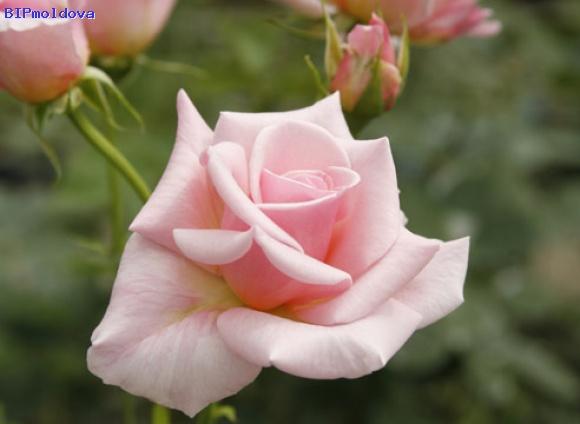

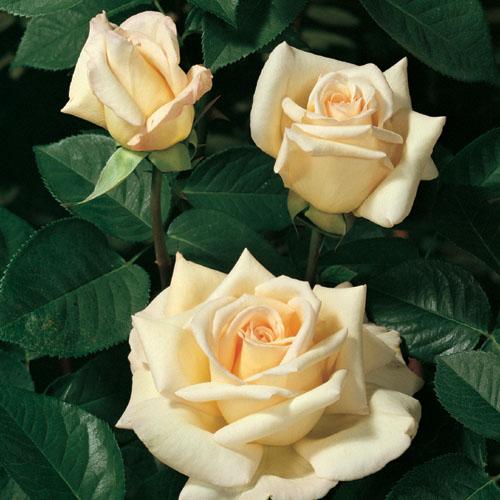
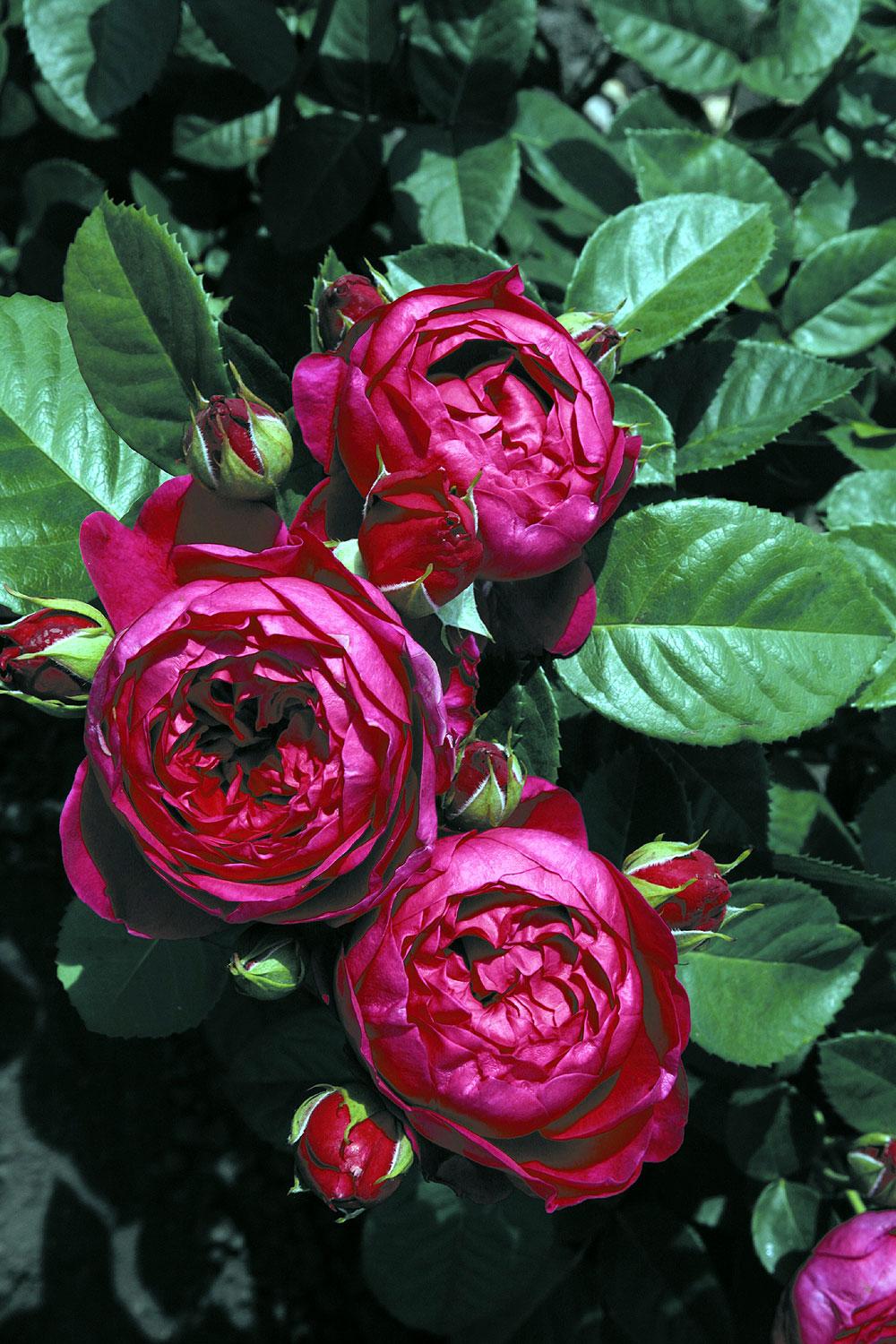
Oriental hybrid - Barbados
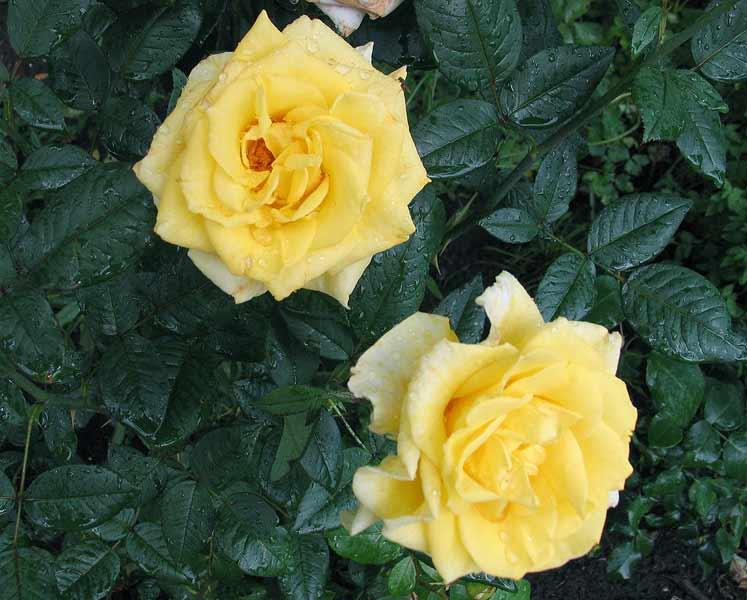

ROSES POLYANTHE
Popular groups of roses, short description and characteristics.
Hybrid tea rose
Hybrid tea roses- the most popular group of varieties that are grown both in the form of a bush and in the form of a standard tree. An ordinary hybrid tea rose has large or medium-sized flowers with numerous petals, and the flower-bearing stems are long. The flowers on the shoot, as a rule, have one or more lateral buds.
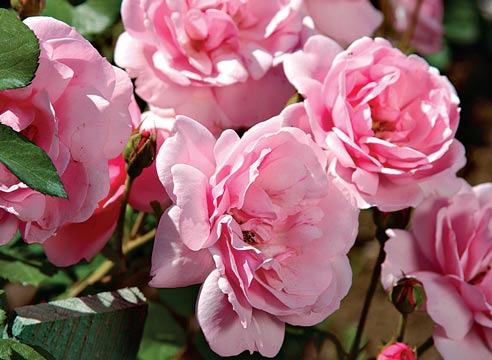
Rose floribunda
Floribunda roses- bloom longer than hybrid tea, but more reliable as plants. The flowers of these plants are collected in racemose inflorescences, although not as beautiful as in hybrid tea. They look very beautiful in plantings in flower beds.
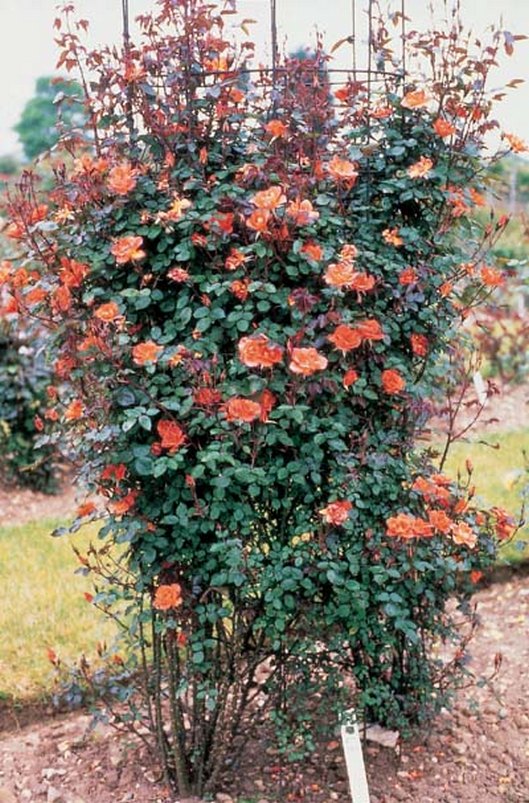
Patio roses
Roses patio- isolated from the floribunda group in the 80s of the twentieth century. This popular group includes many popular varieties that represent undersized plants no more than 50 cm in height. They can be planted in pots and tubs as well as in the foreground of the curb.
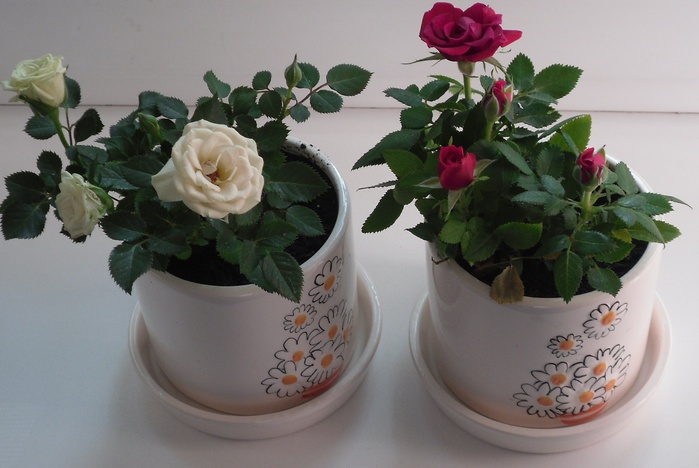
Just miniatures!
Miniature roses- are popular because of their novelty and the variety of varieties included in it. Miniature roses can be grown in tubs, in rock gardens, as indoor plants or along the edges of the flower beds. Miniature roses are characterized by small leaves and plant height under normal conditions does not exceed 40 cm.

Climbing roses Rambler
Climbing roses Is a group of roses that requires support. Among them there are varieties with long flexible stems and small flowers. They are collected in large racemose inflorescences, and they bloom once a season. There are also varieties with large flowers and tough stems, or they can bloom several times per season. These include Rambler roses, Climber roses.
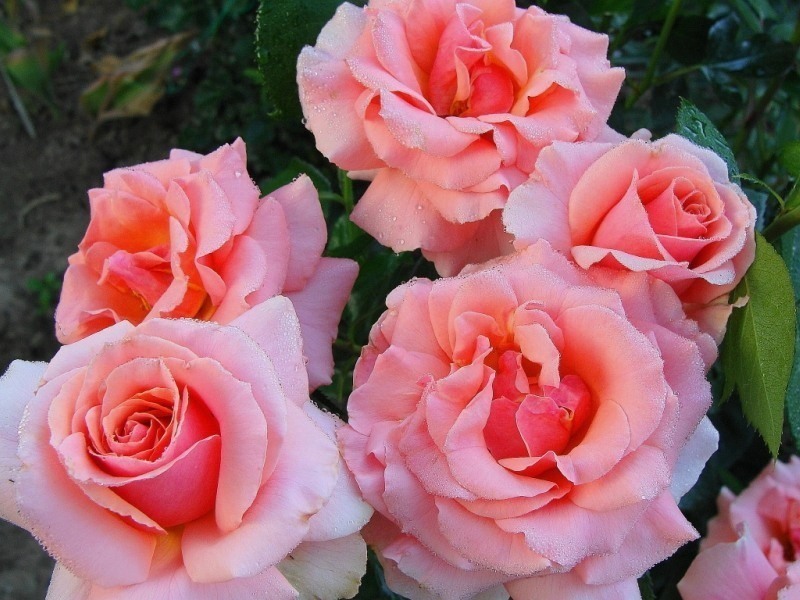
Roses of Grandiflora
Roses of Grandiflora. The ancestor of this group of roses is Queen Elizabeth. The flowers are shaped like hybrid tea roses. Large and, as a rule, collected in various inflorescences. Long and abundant flowering is inherent in them. Bushes are tall, spreading with abundant foliage. They are more winter-hardy and disease-resistant than hybrid tea. They can be used for landscaping, forcing and cutting.
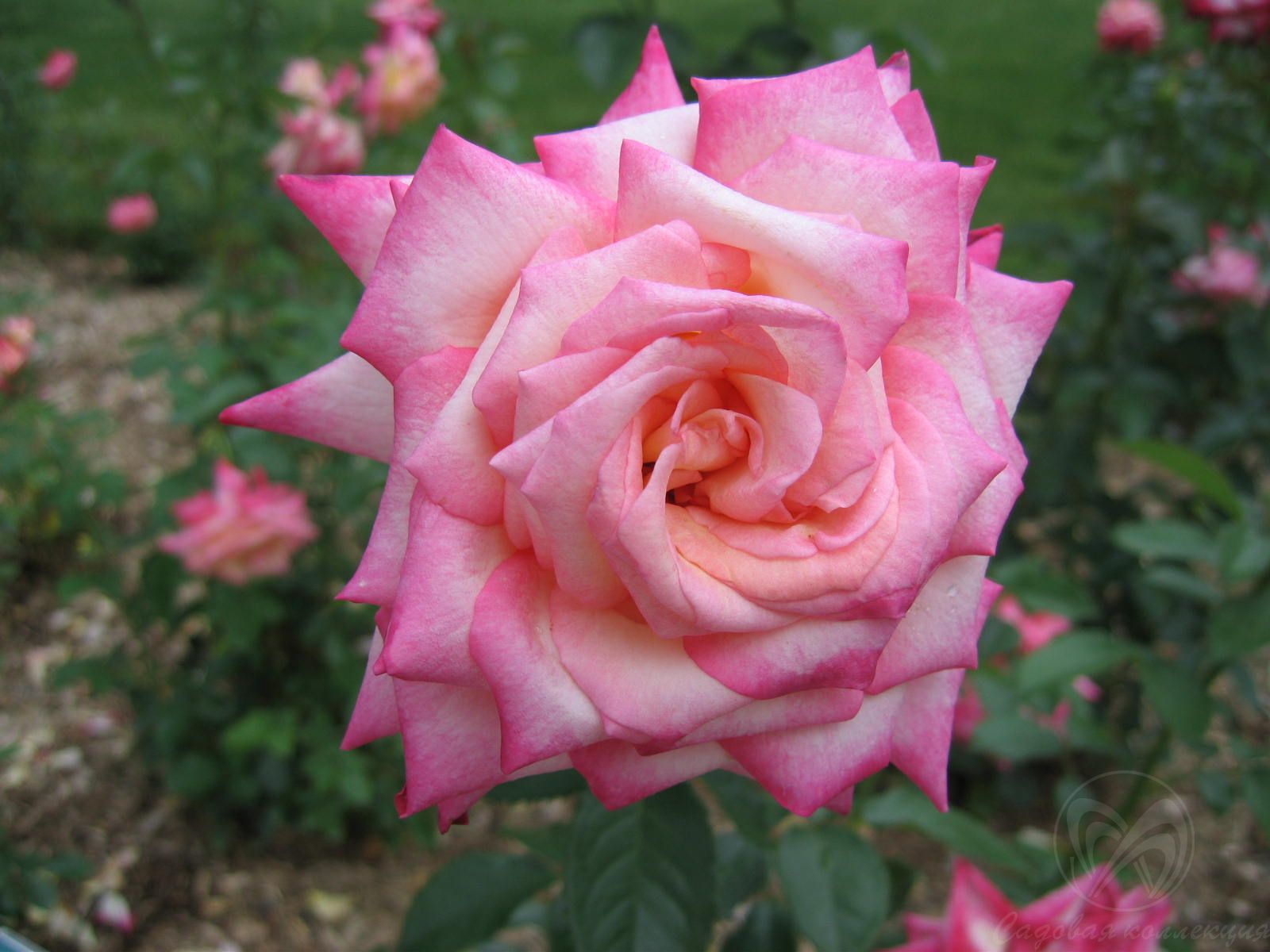
Large Rose of Cordes
Roses of Cordes. The creator of this group of roses is the famous German breeder V. Kordes. Flowers differ in a variety of shapes and colors. Bloom profusely until late autumn. Hardy and disease resistant.
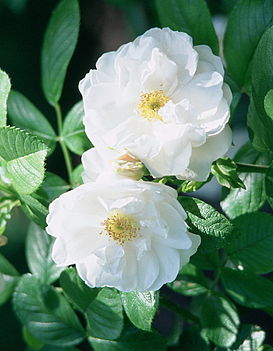
Hybrids of the rugosa rose, or the wrinkled rose. The flowers are medium and large, of different colors, with a strong aroma, solitary or collected in inflorescences of 3-6 pieces. Bloom for a long time. The bushes are decorative. Very winter hardy, disease resistant. Unpretentious.
These are not all the main groups of roses, read the rest in the following parts.